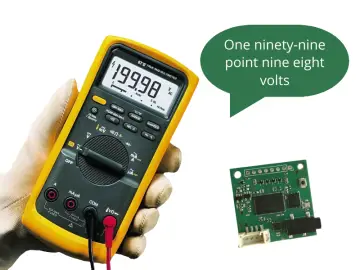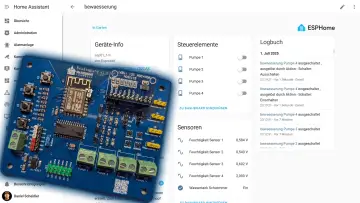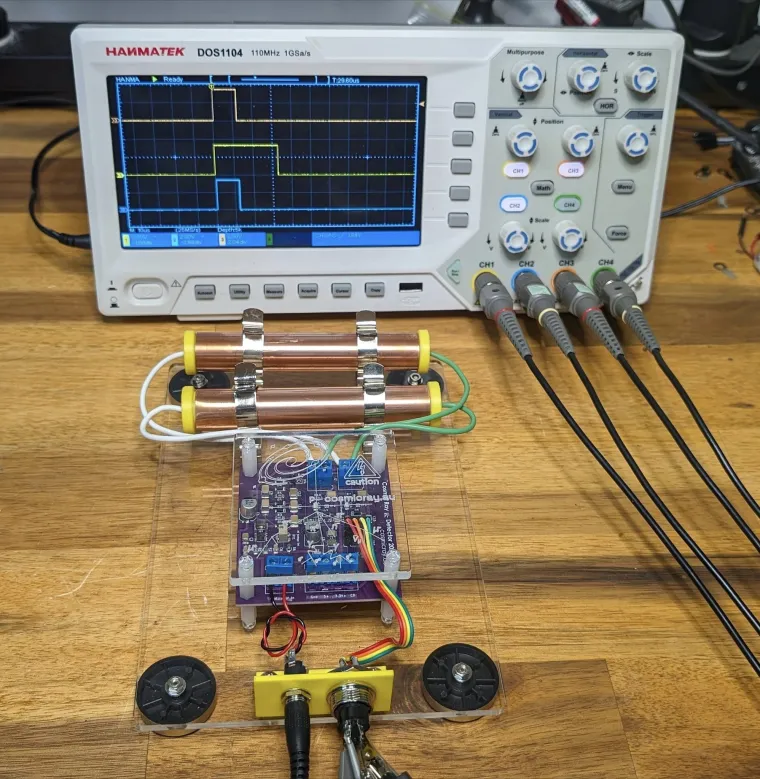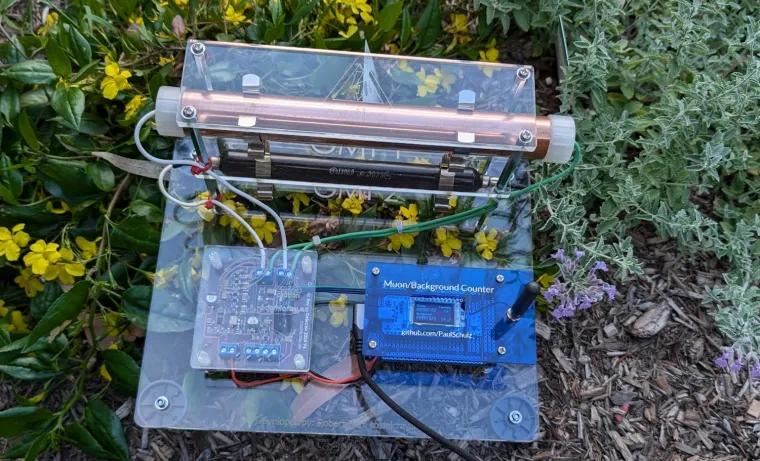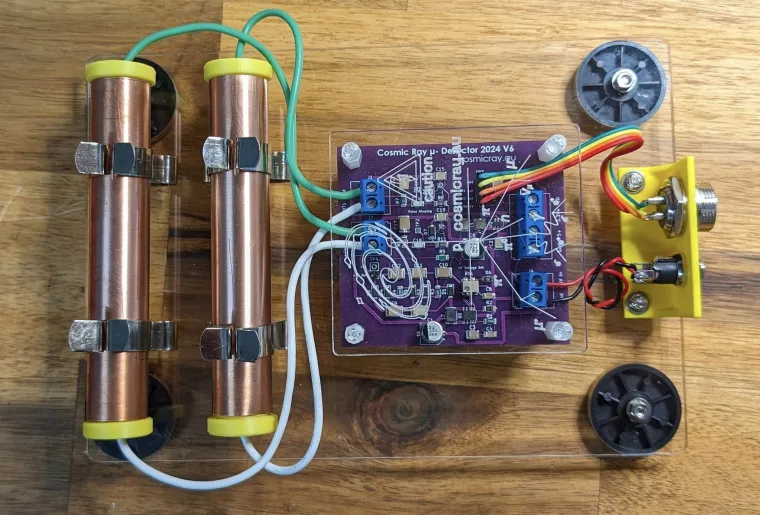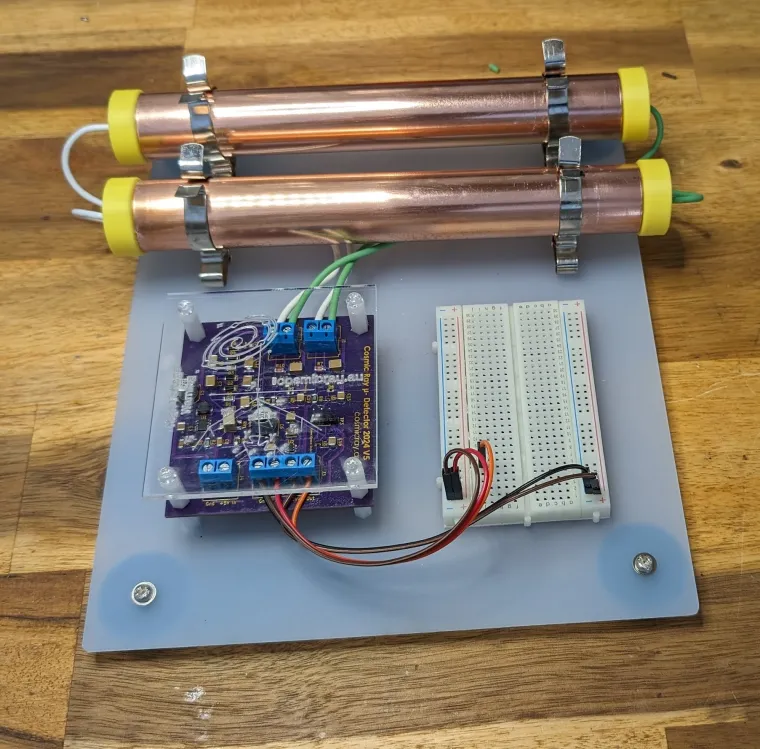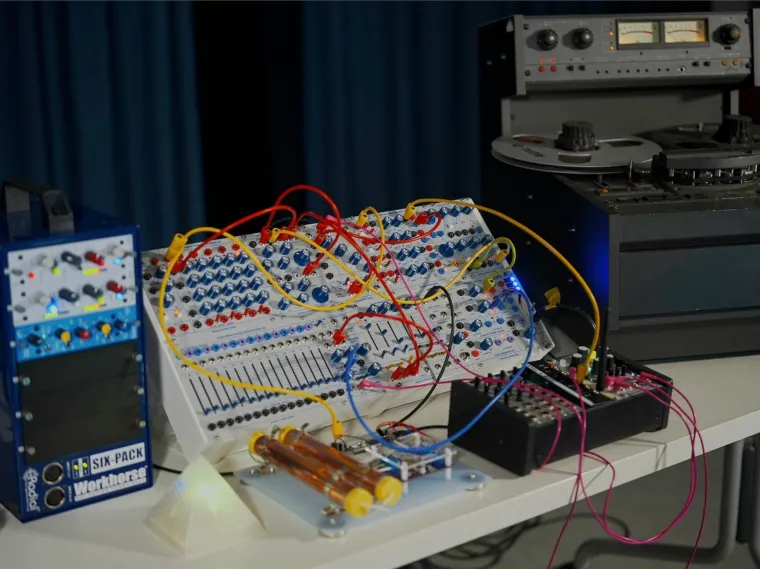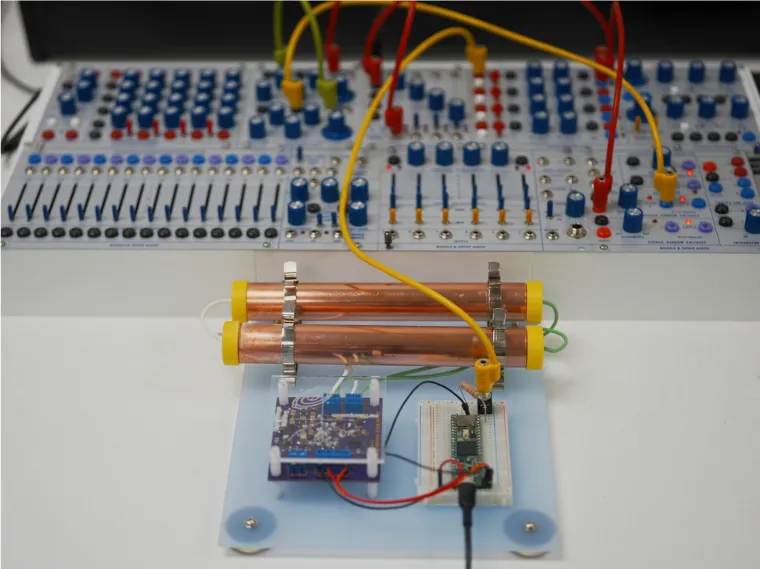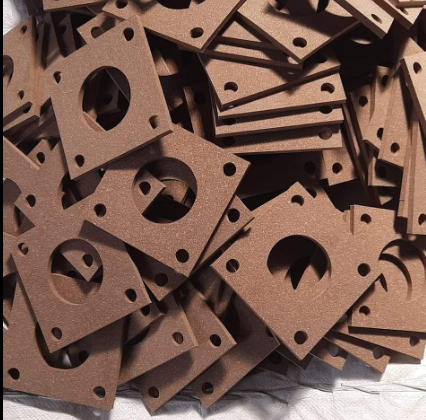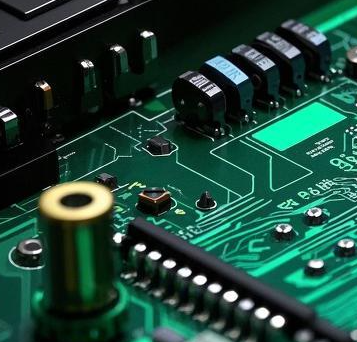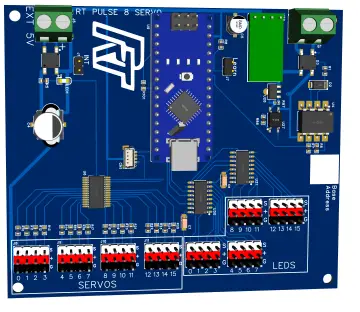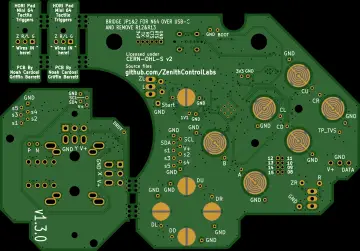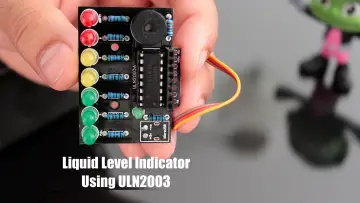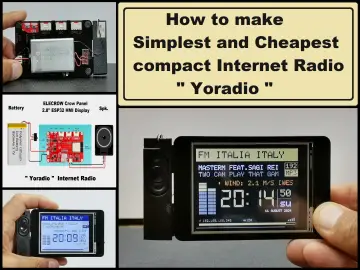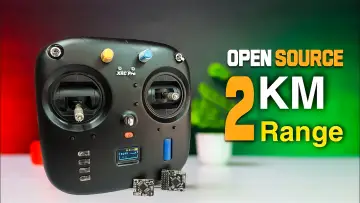Story
This Cosmic Ray (Muon) Detector Kit is an open-source hardware project that has come about as a result of tinkering and building many Cosmic Ray detectors of various types since 2007. I’m regularly approached by people wanting me to construct them or needing assistance. These include musicians, artists, educators, and enthusiasts. However, juggling new projects with job and family life have posed some constraints. Consequently, I’ve recognised the need to develop a straightforward simplified kit that will empower anyone to construct and customise their own detector. For whatever their intentions or interest: education, for art, music or just wacky nonsense. My reasons are: I have a love for making things and a passion for science. Visit my website for more information https://cosmicray.com.au/cosmic-ray-muon-detector-kit The kit with a variation to count muons and background https://cosmicray.com.au/cosmic-forever

Large new Chinese Geiger Muller Tubes J305 unshielded and very sensitive. The supply voltage is 5V. Channel 1, Yellow = GMT 1. Channel 2, Blue = GMT2. Channel 3 = Coincidence detection in Channel 1 and Channel 2. Settings on the DSO are 2V Per Division and 2 Micro Seconds Per Division. The trigger is set for Channel 3. GMT Voltage is set to 400V with a series resistor 10Mohm. Logic out is 3.3V

Minimulaise kit setup with 2 gamma sensitive J305 metal cathode GMT enclosed in copper pipe shielding laser cut acrylic base, cover and 3d printed connector bracket. 5V power pack.
This is a soak test after 24 hours without shielding on tubes. Channel 1 = GMT 1 Channel 2 = GMT2 Pulse Width is proportional to raw GMT Pulse with and output level.
Please note: Geiger–Müller tubes use high-voltage DC between 350 and 900V, depending on the manufacturer. Please be aware that building and using such equipment comes with a risk of potential shock. It is only recommended for construction or use by individuals with experience.

Updated PCB Design J4 VCC supply voltage can range between 5 to 12V – Regulated 3.3V 2A Out on J3 for external devices. VCC on J3 is coupled to J4 Supply VCC.
The design of this kit is based around two Geiger–Müller tubes. A technology that has been embraced by many astrophysicists and educators since the early 20th century when Cosmic Rays were initially identified. Despite the evolution of alternative detection methods involving photomultipliers or SiPM coupled with a scintillator. A Geiger–Müller tube in my opinion currently persists as the most economical and accessible technology for Do-It-Yourself (DiY) detector projects.

Geiger–Müller tube operation – Some images sourced from wikipeadia
A Geiger–Müller tube (GMT) typically functions at a high voltage around 400V DC or even higher, depending on the manufacturer. There are many low-cost versions available, such as surplus ex-Soviet models (as below) and other more modern manufacturers, most of which operate within the range of 350 to 450V. Despite this elevated voltage, these tubes consume very little power, operating in the microamp region since they operate in series with a high-value resistor, typically around 10 Megaohms.

Surplus Soviet era Geiger–Müller tube – CI-1G Working Voltage – 360-440V

New Geiger–Müller tube – J308 Working Voltage – 380-480V
The bare minimum requirement for any cosmic ray muon detector involves at least two GMT tubes enclosed inside a non-ferrous metal shielding and a coincidence circuit. This will effectively filter out any low-energy terrestrial background radiation from Cosmic Ray-initiated muons.
An introduction to Cosmic Ray detection
The output impedance of a basic GMT circuit is very high and so is also susceptible to noise, RFI and static discharge. Therefore it is crucial to use in combination with a low-noise regulated power supply to ensure reliability when using multiple GMTs. To meet this requirement, I have designed a power supply using the Analog Devices LT8365 Low IQ Boost Converter and voltage multiplier with an adjustable feedback circuit. This allows the HT voltage to be set at a level that multiple GMT can be trigger consistently and also provides compatibility with various GMT manufacturer voltages, enhancing the flexibility and adaptability of the design.

Full Schematic of the V7 Cosmic Ray Muon Detector Kit.
Setting the correct voltage is crucial when operating the Geiger–Müller Tube (GMT). When an ionizing particle passes through the GMT, it ionizes the gas inside, causing the resistance between the Anode and Cathode to decrease rapidly before returning to its initial state. This phenomenon occurs within a specific voltage range. If the voltage is too low, ionization will not occur; conversely, if the voltage is too high, the ionization may not be properly quenched, potentially damaging the tube and compromising accuracy. Therefore, maintaining the appropriate regulated voltage is essential for ensuring optimal performance and accuracy when used with multiple GMT.


Another critical aspect of a detector circuit involves the conversion of the pulse generated by a Geiger–Müller tube (GMT) down to a usable level used by the logic circuit. At the juncture where the high-value resistor ~10M and GMT connect in series, a voltage drop will occur with regards to ground. At this point a low-value capacitor ~20pF is coupled to the input of an Inverting Schmitt Trigger which has been bias High (1) with another high value resistor ~100K at the logic circuits supply voltage +3.3V meaning the output of the Schmitt Trigger will be Low (0). When the negative pulse of the GMT is seen by the Schmitt Trigger it will register as Low (0) and and the output will be High (1), for the duration negative traveling transition.


Pulse shaping green is raw GMT the yellow outputGMT Pulse Shaping output 3.3V Positive GMT input -100V
Another aspect of the a cosmic ray detector measuring a coincidence of pulses from the two GMT. Now that we have logic level pulses it is a simple matter of using an AND Gate.

Basic overview of coincidence detection between two GMT – all designs in KiCAD
Named a “coincidence circuit” this invention emerged in the 1930s, courtesy of Bruno Rossi, an Italian experimental physicist captivated by the mysteries of Cosmic Rays. Motivated by a desire for a more practical and dependable method of measuring these phenomena, Although this idea may seem simple Rossi’s invention marked a significant advancement and not just in cosmic ray detection.

The main concept behind a ‘coincidence circuit‘ in signal processing is that if a detector identifies a signal pulse amidst the random noise pulses inherent in the detector and environment, there is a certain probability that the detected pulse is actually a noise pulse. However, if two detectors simultaneously detect the same signal pulse, the probability that it is a noise pulse in both detectors is statistically squared. The rate of background radiation in most locations is very low, only a few counts per minute, but with the addition of shielding, this rate is further reduced. Consequently, the likelihood of coincidence detection being cosmic ray muons rather than background radiation is significantly increased.

Coincidence detection and shielding to identify cosmic ray muons
Shielding in a Cosmic Ray Muon Detector
Use non-ferrous, non-magnetic metals to avoid the potential of deflecting charged particals. Lead, Aluminum, or Copper being viable options. Copper, in particular, is a favorable choice due to its ease of workability, readily available in many tube diameters, electrical conductivity reducing radio frequency interference (RFI), and lower toxicity than lead.

Pipecutter and Copper Tubing
Shielding is mainly used to increase the statistical difference of noise in the coincidence circuit. With 2 main aims: 1) To differentiate the noise within each Geiger–Müller tube due to natural radioactive decay in matter e.g. gasses, glass and metals surrounding the detector and materials used to manufacture Geiger–Müller tube. 2) Cosmic Ray muons start with very high energy and speed, having the capacity to ionise many atoms before their energy is exhausted. Shielding in combination with the coincidence circuit helps to differentiate between slow moving particles from background radiation and muons which will pass through any shielding applied.

Geiger–Müller tubes enclosed in pollished copper tube with 3D printed end caps
It is very easy to shield detectors from Alfa radiation, which is most common in our environment. Beta radiation can be stopped with conductive metals like aluminum or copper. Gamma radiation being very penetrative is difficult to filter, however it occurs at very low count rates, random times and directions. Consequently this noise is very low compared to Cosmic Ray muons and so can be relativelly ignored.












